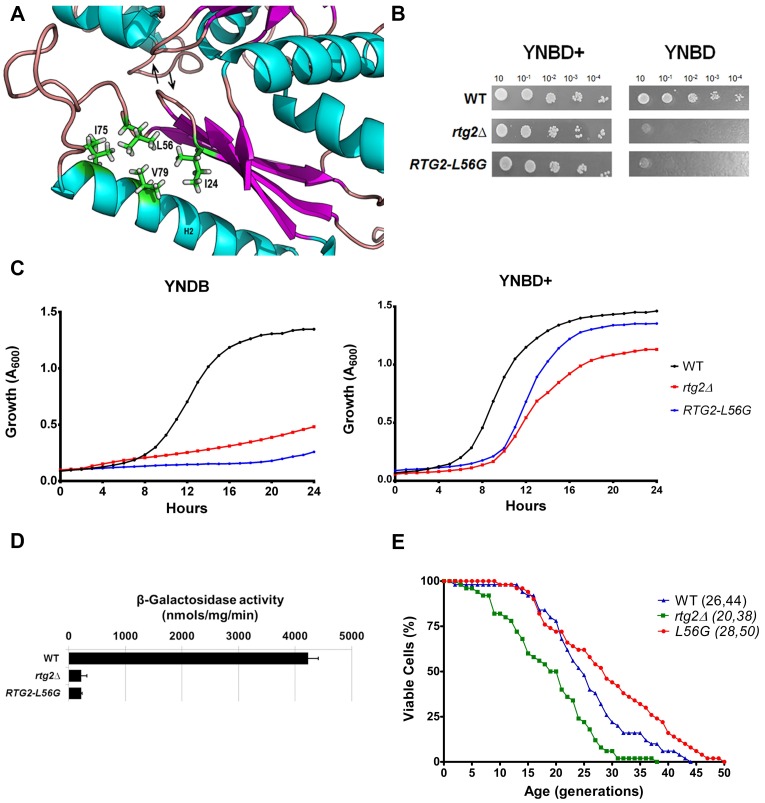Fig 2. The mutation RTG2-L56G impair retrograde signaling, but extends replicative longevity.
(A) Location of L56 residue on Rtg2p protein structural model. ATP-binding loops are indicated with arrows. (B) Mutation L56G in Rtg2p render glutamate auxotrophy to yeast cells. Wild type, rtg2Δ, and RTG2-L56G strains were grown on YPD to A600 = 1 and four serial dilutions (10−1, 10−2, 10−3, and 10−4) were spotted on solid minimal media YNBD and YNBD+ (YNBD plus glutamate at 0.02%). The plates were incubated at 30°C for three days when photographs were taken. (C) Growth performance of strains on minimal liquid medium. Wild type, rtg2Δ and RTG2-L56G strains were grown on YPD until saturation, and diluted to A600 = 0.1 in 200 μL of either YNBD or YBND+. The cells were incubated at 30°C, 160 rpm, for 24 h and growth monitored in a INFINITY PRO 200 (Tecan) microplate reader. (D) L56G mutation impairs retrograde signaling activation on minimal medium. Wild type, rtg2Δ and RTG2-L56G strains were grown on YNBD medium until A600 = 0.6 and cell extracts were prepared to analyze CIT2-LacZ expression. β-galactosidase assays were performed in triplicate as described in the Materials and Methods section and the activity normalized by total protein concentration. (E) Replicative lifespan is extended in the mutant RTG2-L56G. Fifty cells of each strain were aligned on YPD and daughter cells were removed from mothers to construct survival curves from at least two independent experiments. The mean and maximum longevity are indicated between parentheses (mean, maximum). Statistical significance between samples is summarized in Table 2.

